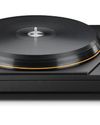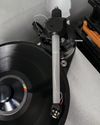
Duke Ellington's death 50 years ago was a massive loss for American music. Elegantly attired, beautifully spoken, and always the picture of sophistication, the African-American icon was one of the greatest composers of American music ever, regardless of genre.
Edward Kennedy Ellington led the Duke Ellington Orchestra (pointedly not a band) from the piano for more than 40 years, using hands and facial gestures instead of a baton. He used charm, flattery, and a deep understanding of human psychology to bind his virtuosos to the orchestra and get the sounds he wanted. Often in collaboration with arranger/composer Billy Strayhorn, the great unsung hero of Ellington's story, Ellington composed music of all lengths and for all occasions for the orchestra he toured the world with from the 1920s into the 1970s.
So massive is Ellington's recorded legacy that it tends, much like Miles Davis's, to divide fans into groups committed to specific periods. Because his early manager, Irving Mills, had him record for a variety of labels, his recorded catalog of tracks has more than 1000 entries. He also had a penchant for recording live performances, further expanding his catalog. Today, his vast catalog is accessible across all corners of the planet, much of it on music-streaming services.
Looking for something comprehensive? Far and away the best survey on physical media, covering almost his whole career, is The Duke Ellington Centennial Edition, The Complete RCA Victor Recordings (19271973), which fills 24 CDs and was issued in 1999. An alternative intended for streaming sites is Sony's excellent Ellington in Order series, which is licensed across labels and includes material from his stints with RCA and Columbia.
This comparatively tiny sample of Ellington's music is meant to mark the 50th anniversary of the great man's passing. In researching this feature, I stuck to domestic (US) labels and widely available releases.
This story is from the September 2024 edition of Stereophile.
Start your 7-day Magzter GOLD free trial to access thousands of curated premium stories, and 9,000+ magazines and newspapers.
Already a subscriber ? Sign In
This story is from the September 2024 edition of Stereophile.
Start your 7-day Magzter GOLD free trial to access thousands of curated premium stories, and 9,000+ magazines and newspapers.
Already a subscriber? Sign In

Michael Des Barres and the Art of Aural Obsession
Listening to music inspires us to take action. Upon hearing an I.E.-Instant Earworm-we must then determine the best way we can go about listening to it again (and again) at our convenience.

PLANET OF SOUND
BLACK FRANCIS ON HARNESSING THAT MAGIC PIXIES DUST

T+A R 2500 R STREAMING RECEIVER PHONO MODULE
In my review of the T+A R 2500 R receiver (August 2024 issue), I covered many of its features and took as deep a dive as time and column inches allowed.

Audia Flight FLS10
The dogma of separates has long reigned supreme among audiophiles: If you're serious about sound quality, you're supposed to need a dedicated preamp and power amp.

Totem Acoustic Element Fire V2
Totem Acoustic was founded in 1987, in Montreal, Canada, by a former high school math teacher named Vince Bruzzese. The company's first product, the Model 1 loudspeaker,' impressed me so much I bought a pair.

MoFi Electronics MasterDeck
Get two mouthy jazz drummers in a room and watch the sparks fly. Talented turntable designer Allen Perkins, the brain behind Spiral Groove,2 Immedia's RPM turntables,³ and various SOTA models, is first and foremost a jazz drummer.

Soulution 727
AImost 14 years have passed since a review of a Soulution product appeared in the pages of Stereophile.\"

The Spin Doctor checks out the Kuzma Safir 9, a superarm from Slovenia.
The British audio scene from the late 1970s through the mid-1980s was pretty strange. Audio as a hobby was a big deal, with widespread appeal to a much younger crowd than today. Audiophiles were guided by a flurry of what my friends called \"hi-fi pornos,\" audio magazines that filled the racks at the newsagents.

Alex goes to Japan
Arriving in Japan from the United States is like being turned upside down. This condition lasts for much of the first week. When I visited in November, the time difference between Tokyo and New York was 14 hours. \"The floating world\" is a term for the pleasure-addled urban culture of Edo-period Japan, but it's also an apt description for the twilit and not-entirely-unpleasant weirdness of first arriving in Tokyo. Everything seems slightly unreal.

Wilson Audio Specialties The WATT/Puppy
Since the original WATT/Puppy concept kicked off in the late 1980s,' there has been a 40-year evolution leading to the latest version reviewed here.